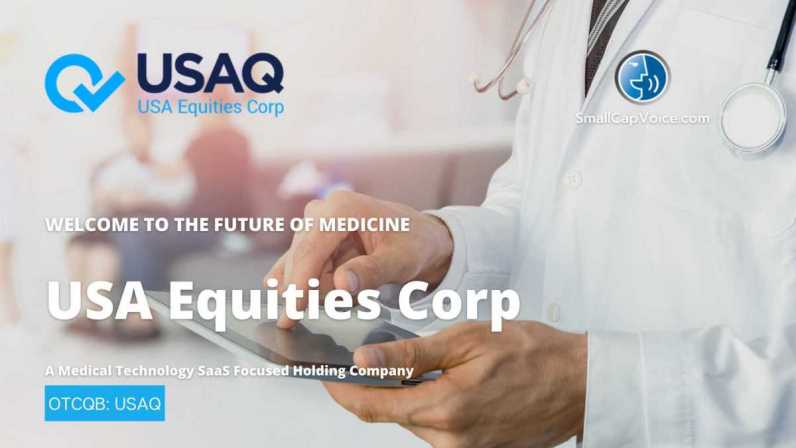
USA EQUITIES CORP. (USAQ)
USAQ focuses on value-based healthcare solutions and physician-directed digital medicine. On December 20, 2019, USA Equities Corp entered into and consummated a share exchange with the former stockholders of Medical Practice Income (MPI), making MPI a wholly-owned-subsidiary of USAQ. The Company is currently focused on value-based healthcare solutions, informatics, and algorithmically personalized medicine including digital therapeutics, behavior-based remote patient monitoring, chronic care, and preventive medicine.
THE NEED FOR USA EQUITIES CORP
Secure, cloud-based Software as a Service (SaaS) Digital Medicine tools for physicians and their patients.
Reimbursements to primary care physicians are on the decline. USAQ empowers primary care providers with the digital tools
needed to provide preventive medicine solutions to their patients and increase revenue for their practices.COVID-19 has accelerated the recognition for virtual care and remote patient monitoring services. USAQ’s software platforms expand the usefulness and benefits for both the patient and physician in the growing, essential trend of virtual medicine.
Practices recognize that they must adapt their method of operating to this new virtual reality by adopting secure, health technology tools that enable them to interact with patients who need health care services, even when the patient is not in the medical office.
USAQ OFFICE & MOBILE SOLUTIONS
EVALUATE | PROGRAM | COACH | ENGAGE
Ticker: USAQ
Stock Price: $0.55
Shares Outstanding: 6.99M
Market Cap: $3.8M
Float: ~1.1M
SELECT FINANCIALS
(as of May 4th, 2021)
- USAQ enables physicians to provide the best in care to their patients.
- USAQ is a new revenue stream for primary care practices.
- USAQ provides individuals with important insights about their health.
- USAQ leverages the power of the trusted primary care doctor
USA Equities Corp’s cloud-based solution is the #FutureOfMedicine.
- AI-enhanced machine learning
- Proprietary digital medicine solutions
- $17+ Billion total addressable market
- Robust analytics, database, and dashboard
USAQ has successfully launched QHSLab in South Florida, providing hundreds of allergy patients with a QHSLab-generated allergen immunotherapy prescription. Practices have created in excess of $600,000 in new reimbursements in just a few short months.
- USAQ has entered into an exclusive agreement to distribute the AllergiEnd® allergy diagnostic and allergen
immunotherapy system. - The AllergiEnd® system enables primary care providers with means to test patients for a broad spectrum of
allergens within the confines of their office, thereby enabling the physician to identify the specific cause of the
patient’s allergies which can lead to targeted allergen immunotherapy treatment as opposed to merely masking
symptoms with various antihistamines.

